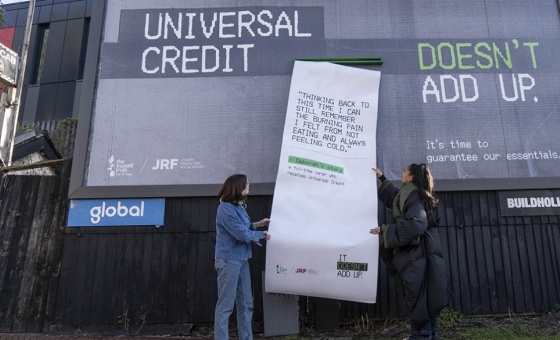This is the last article you can read this month
You can read more article this month
You can read more articles this month
Sorry your limit is up for this month
Reset on:
Please help support the Morning Star by subscribing here
NATHAN HOBBY takes on the challenging task of sorting out the complicated details of Katharine Prichard’s life as celebrity, journalist, poet, novelist, short-story writer, social activist, public speaker and communist.
It is remarkable that we have had no full-scale independent biography of Prichard to this date. So The Red Witch is timely.
It can be read alongside works by figures such as Carole Ferrier and Drusilla Modjeska, and later literary scholars, who have been rediscovering the role of Australian women as novelists, journalists and critics in the interwar and postwar decades.
Prichard is a key figure in Australian literary history, intellectual history, and left-wing political history.
She was controversial as a communist activist, for those inclined to discover such controversy, but her friendships and family ties were seldom bound to political allegiance in any narrow way.
They were more often defined by the intensity and commitment of the friendship she asked for and offered.
The Red Witch is not written for “scholars,” as Hobby explains, despite Prichard’s ongoing interest for literary critics and historians. It has been written for “a general readership drawn to the peculiar pleasures of biography: the true drama of a life, the glimpses of a lost but familiar world, the recoverable details of the past.”
Prichard’s father, a committed journalist and editor, was an arch-conservative. He was religious, later depressed, and eventually suicidal.
The early portraits of him in Fiji with his family at the time of Prichard’s birth remain entangled in much of the story beyond his life, despite the “outrageous” distance Prichard travelled from her father’s aspirations.
Prichard’s early religious entanglements were in dialogue with her father. So were her later departures towards the causes of labour, women’s rights and socialism.
Her initiative and originality emerged early in her taking on the tasks of governess, teacher, part-time student, and then journalist. These qualities were evident, too, in her early writing and involvement in local drama societies.
Early contacts became lifelong friendships. She remained on close terms with Hilda Bull (later Hilda Esson), Nettie Palmer, and Christian Jollie Smith — three women who also had remarkable careers.
Hobby stresses the significance of Melbourne in Prichard’s maturation as a writer and in shaping her complicated political engagements.
Her family connections and her activities in journalism and literary circles led to influential contacts, from Alfred Deakin to the academic and essayist Walter Murdoch, the poet Bernard O’Dowd and, later, Miles Franklin.
Her politics developed over the same period, through the whole range of socialist philosophies. She embraced pro-suffragist, rationalist and materialist positions, with what she herself later called “idealistic naivety.”
WWI confirmed her left-wing politics. She voted No in the second referendum on conscription. Her commitment to peace was cemented in place at this stage, not least because of her brother’s death in France.
The Russian Revolution would reinforce the directions her politics were taking, Prichard was a founding member of the Communist Party of Australia in 1920 with Jock Garden, Tom Walsh, William Paisley Earsman and Adela Pankhurst (daughter of Emmeline).
Prichard’s political activity in this period, and right through to the 1960s, is extraordinary.
She participated in a wide range of social groups, left-wing and women’s associations, the Movement Against War and Fascism, the Writers’ League, the Australian Peace Council, and many more.
Her support of communism and the Soviet Union remained firm from the 1920s on. In her utopian book The Real Russia (1935), she displays an extraordinary passion and, in her own way, a modernist desire for change.
Prichard’s first published book The Pioneers (1915) won Hodder & Stoughton’s prize for novels from “colonial and Indian authors.”
The Pioneers has recently attracted new critical interest for its complicated portrayal of the Australian bush, its relative “quietness,” and its structure and characterisation.
Prichard’s potential significance for literature, and Australian literature in particular, was noted in reviews at the time.
Intimate Strangers, published in 1937 after numerous delays and revisions, contains stories of sexual desire and violence and its psychological entanglements remain challenging.
What comes across throughout much of The Red Witch, right through to Prichard’s death, and alongside her sensuous identifications with nature, region and character, is the “unglamorous” dimension of the life of a working writer.
Hobby covers the recent controversies surrounding Aboriginal representation in Coonardoo (1929), but affirms the novel’s ongoing power.
Australian writer and feminist Miles Franklin was one of the first to emphasise the central role of both women and Aboriginal peoples in Prichard’s fiction.
Her life was marked by the suicide of those closest to her — her father and then her husband, Hugo Throssell — and beyond her marriage by threats of sexual violence or rape.
Personal life often exposed the tensions between fidelity, desire and intimate relations.
These later elements reappear directly or indirectly in her fiction, making it edgier and more powerful than the work of many of her contemporaries. There is little in Prichard’s fiction that sits comfortably with more mainstream investments in the Australian bush.
The Red Witch offers only “notes towards” a sense of Prichard’s engagement in the intellectual history that her politics and literary aspirations demanded.
Her extensive reading of Marx and other political literature is noted, but little of the intellectual or political imperatives of such reading at such a time is explored.
Despite disagreeing with the Communist Party’s criticism of the Soviet Union at the time, Prichard paid up her membership three days before her death in October 1969.
Events such as the Spanish civil war and Soviet communism itself are sometimes presented as being very remote from readers’ understanding.
The Red Witch joins a cluster of recent publications about Australian women authors from the interwar and post-war decades: Georgina Arnott’s edited Judith Wright: Selected Writings and Ann-Marie Priest’s My Tongue Is My Own: A Life of Gwen Harwood.
Last year saw Eleanor Hogan’s Into the Loneliness an account of the “unholy alliance” between Ernestine Hill and Daisy Bates which produced international bestseller The Passing of the Aborigines in 1938.
This cluster of titles suggests that we now have a rich archive of stories and studies of these writers’ lives and their personal and intellectual networks.
And yet my impression at the moment is that the institutional structures and support for such a grouping are disappearing rather than emerging, despite the enthusiasm we see for contemporary Australian fiction in our festivals, bookstores, reading groups and among new postgraduates.
Let’s hope The Red Witch attracts new readers, for much of it will be news to many.
David Carter is professor emeritus of The University of Queensland. This an abridged version of an article is republished from theconversation.com under a Creative Commons licence.
The Red Witch: A Biography of Katharine Susannah Prichard
by Nathan Hobby was published last month by Melbourne University Publishing.











